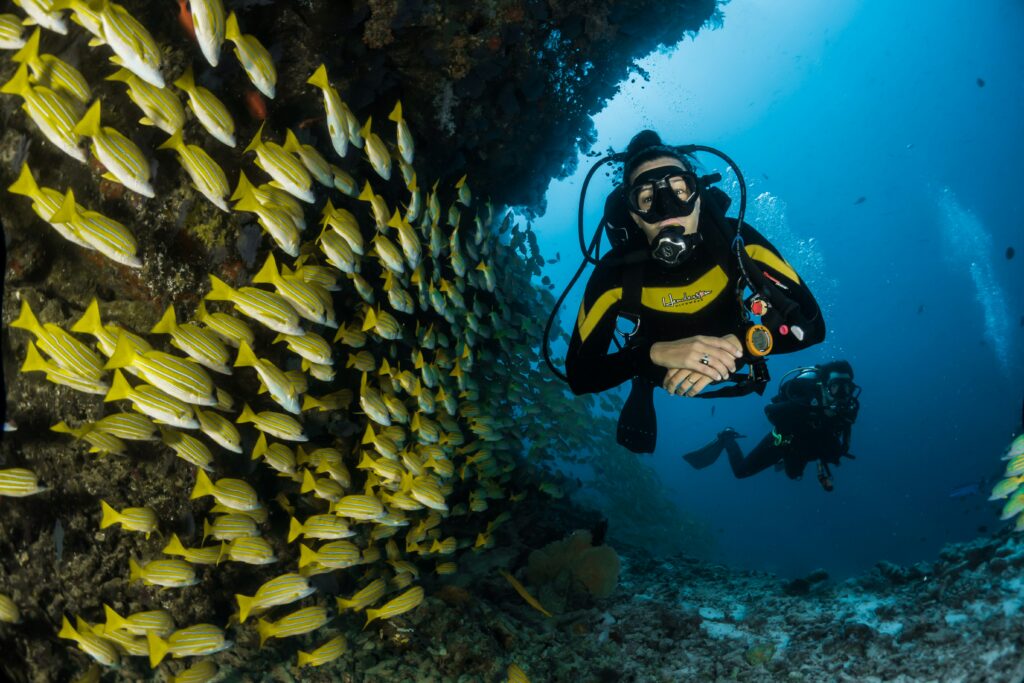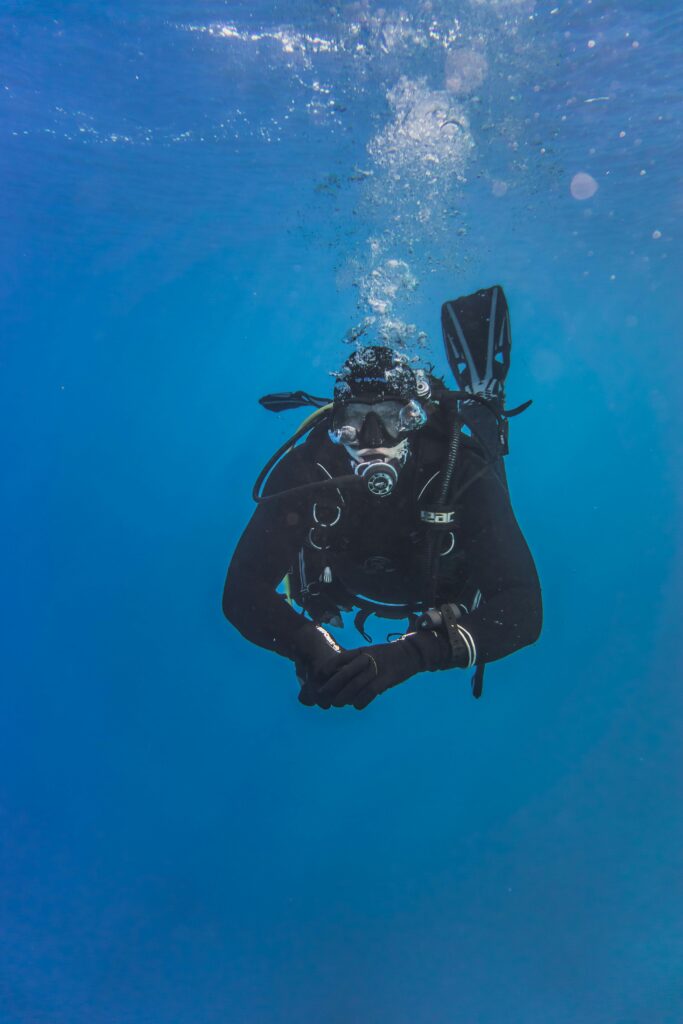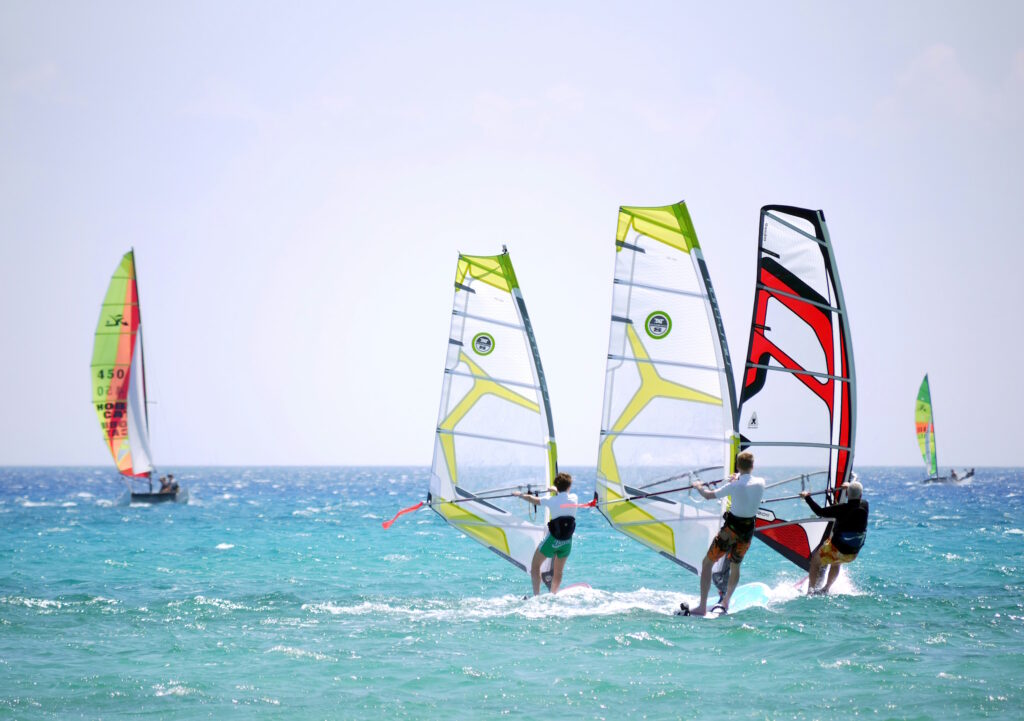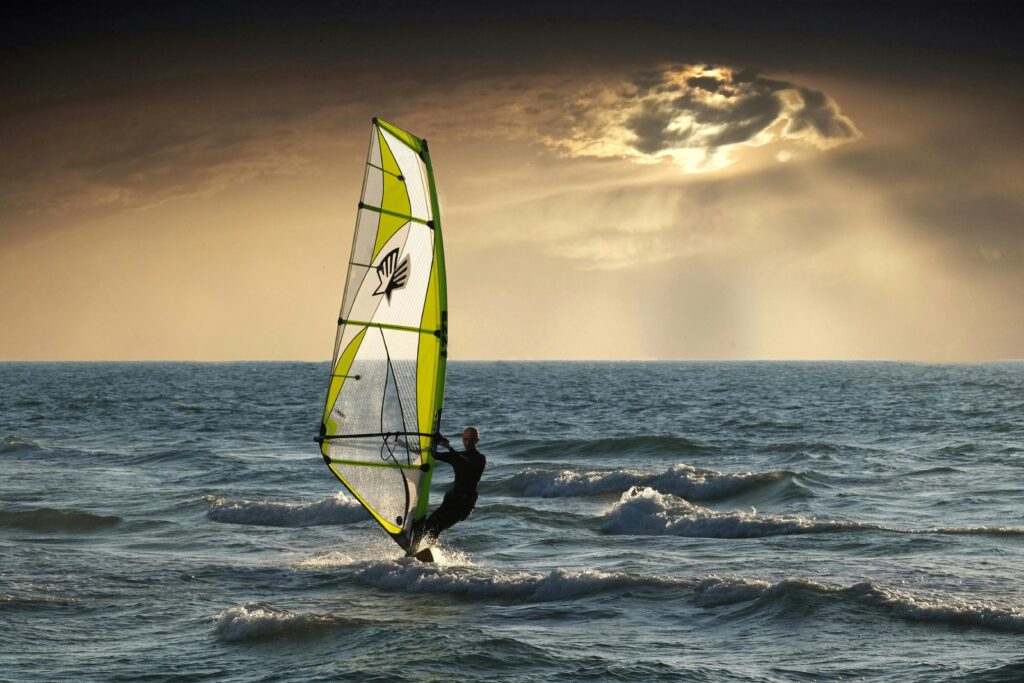Scuba diving in Thailand has always been on my bucket list. With its crystal-clear waters and vibrant marine life, it’s a diver’s paradise that’s hard to resist. From the bustling reefs of Koh Tao to the serene underwater landscapes of the Similan Islands, Thailand offers an underwater adventure for every level of diver.
I’ve explored numerous dive sites around the world, but there’s something truly magical about Thailand’s underwater world. Whether you’re a beginner looking to get your fins wet or an experienced diver seeking thrilling deep dives, Thailand has it all. Let’s dive into why scuba diving in Thailand is an experience you won’t want to miss.
The Appeal of Scuba Diving in Thailand
When I first set out to explore the underwater realms of Thailand, I knew I was in for a treat, but nothing could have prepared me for the sheer beauty and diversity that awaited.
For starters, Thailand’s waters are renowned for their clarity and warmth. This ensures that every dive is not just comfortable but also offers excellent visibility, sometimes extending up to 30 meters. It’s like being submerged in a gigantic, clear aquarium, surrounded by a spectacle of marine life.
The diversity of marine habitats is incredible. From the soft coral gardens of the Similan Islands to the rugged, underwater landscapes around Koh Tao, each dive site presents its own set of wonders. It’s not just about the scenery, though. The biodiversity here is second to none. I’ve encountered everything from majestic whale sharks and manta rays to tiny nudibranchs. It’s this variety that keeps me and many others coming back for more.
What adds to the appeal is the accessibility of dive sites. Whether you’re a seasoned diver or someone just looking to get their feet wet, Thailand has spots that are perfect for all levels. Beginners can enjoy shallow reefs teeming with colorful fish, while advanced divers can explore deeper wrecks and caves.
Moreover, the dive community here is vibrant and welcoming. There are numerous dive schools offering PADI and SSI certifications, run by instructors who not only know the local waters inside out but are also passionate about marine conservation. Their enthusiasm is contagious, making every dive an opportunity to learn something new, not just about diving but also about the marine ecosystem.
Every dive in Thailand has been a unique experience, full of discoveries and fascinating encounters. From the electrifying night dives to the calm early morning ones, each moment underwater here has contributed to my enduring love for scuba diving. The magic of Thailand’s underwater world is indeed something that needs to be experienced firsthand.
Top Dive Sites in Thailand
When it comes to selecting the best dive sites in Thailand, I’m often spoilt for choice. Each site has its unique charm and marine biodiversity, making every dive an unforgettable experience. Here’s a rundown of my top picks that I believe every scuba diver should explore.
The Similan Islands stand out for their vibrant coral gardens and impressive underwater rock formations. This archipelago offers a variety of dive sites suitable for all skill levels, with visibility that can extend beyond 30 meters on a good day. Here, I’ve encountered everything from majestic manta rays to tiny, yet fascinating, nudibranchs. It’s a marine paradise that vividly showcases the underwater beauty of the Andaman Sea.
Hin Pusar, often called “Elephant Head Rock,” is a distinctive dive site in Thailand’s Similan Islands known for its intriguing rock formations and swim-throughs. Named for its elephant-like silhouette above the water, this site features boulders, underwater arches, and channels that create an adventurous playground for divers. This site is teeming with marine life, including vibrant reef fish, moray eels, and occasional sightings of leopard sharks and white-tip reef sharks. With its crystal-clear waters and complex terrain, Hin Pusar offers both beauty and thrilling exploration.
Moving to the Gulf of Thailand, Koh Tao is often dubbed the turtle island for good reason. It’s not just the abundance of sea turtles that attracts divers from across the globe but also the island’s laid-back atmosphere and rich marine life. Chumphon Pinnacle, a deep dive site near Koh Tao, is where I had an exhilarating encounter with a whale shark, the gentle giant of the ocean. It’s moments like these that solidify Koh Tao’s position on my list.
For those looking for something truly unique, Richelieu Rock is an underwater spectacle not to be missed. Known for its purple coral reefs and a plethora of marine species, this horseshoe-shaped pinnacle is often described as Thailand’s best dive site. From schools of barracuda swirling to the elusive harlequin shrimp, Richelieu Rock has always left me in awe of its marine biodiversity.
Hin Muang and Hin Daeng, located in Thailand’s Andaman Sea, offer a truly thrilling underwater experience for advanced divers. Known for their vibrant purple and red coral-covered pinnacles, these sites attract a rich variety of marine life. You can encounter everything from vast schools of fish to large species like manta rays and whale sharks. Hin Muang, meaning “Purple Rock,” boasts Thailand’s deepest drop-offs, while Hin Daeng, or “Red Rock,” is famous for its coral gardens and large, rocky formations. Together, these sites offer unforgettable, high-visibility dives in one of Thailand’s most biodiverse marine areas.
Koh Phi Phi, famous for its stunning limestone cliffs and crystal-clear waters, offers an incredible variety of dive sites that cater to all levels of divers. Located in the Andaman Sea, these islands are known for their vibrant coral reefs, towering underwater rock formations, and abundant marine life. Dive sites like Bida Nok and Bida Nai are popular for encounters with blacktip reef sharks, turtles, and an amazing array of reef fish. The islands have excellent visibility and warm waters year-round. Even though the main island is quite touristic, it has some surprisingly amazing diving sites. It is a top destination for divers of all levels looking for spectacular sites, easily accessible. A few miles off the islands, you can discover the 83-meter-long wreck of the King Cruiser, a great playground for slightly advanced divers.
While these sites are just the tip of the iceberg in Thailand’s scuba diving scene, they’ve given me some of the most memorable diving experiences. Each dive site has its own set of challenges and rewards, but they all share the common thread of Thailand’s underwater beauty.
Diving Conditions and Marine Life
Thailand’s underwater environment is as inviting as its picturesque landscapes. With water temperatures ranging from 28°C to 30°C (82°F to 86°F) year-round, divers can enjoy comfortable dives without the need for thick wetsuits. Visibility, another critical factor for an excellent diving experience, can extend up to 30 meters (98 feet) in some areas, allowing divers to fully appreciate the vibrant coral reefs and abundant marine life.
The country is split into two primary diving zones: the Andaman Sea on the west coast and the Gulf of Thailand on the east. Each zone offers unique diving experiences due to differing marine ecosystems. The Andaman Sea is renowned for its dramatic underwater landscapes, including deep drop-offs, caverns, and wrecks, coupled with a rich variety of marine life. In contrast, the Gulf of Thailand is celebrated for its more accessible dive sites and gentle diving conditions, making it ideal for beginners.
Let’s dive into the specifics of marine life in these waters:
- Manta Rays and Whale Sharks: These gentle giants are the stars of Thailand’s underwater world. The Similan Islands and Koh Tao are among the top spots for encounters with these magnificent creatures.
- Colorful Coral Reefs: Home to an impressive array of hard and soft corals, divers can marvel at the underwater gardens found in the Similan Islands and Richelieu Rock.
- Diverse Marine Species: From nudibranchs, moray eels, and sea turtles to schools of tropical fish, divers can expect to meet a kaleidoscope of sea life.
Given the difference in seasons and marine biodiversity between the Andaman Sea and the Gulf of Thailand, choosing the best time and place for diving depends heavily on what you’re hoping to see. However, the peak diving season runs from November to April, when conditions are at their best. Diving outside of this timeframe is possible, especially in the Gulf of Thailand, but the Andaman Sea can experience rougher conditions due to the monsoon.
Dive Certification and Training Opportunities
For those intrigued by the underwater world, Thailand offers not just astonishing dive sites but also numerous opportunities for dive certification and training. If you’re thinking of starting your dive journey or looking to advance your skills, Thailand’s dive centers provide a range of courses from entry-level to advanced specialties.
I’ve found that Thailand’s dive schools have highly experienced instructors. PADI (Professional Association of Diving Instructors) and SSI (Scuba Schools International) certifications are widely available, ensuring that your dive training is recognized worldwide. What’s remarkable is that these courses are often more affordable in Thailand compared to other popular dive destinations.
If you’re a beginner, the Open Water Diver course is your ticket to get certified. It usually takes three to four days and encompasses both theory lessons and practical dives. For those already holding a certification and looking to deepen their dive knowledge, Advanced Open Water or specialty courses like Deep Diver or Wreck Diver are readily available.
Thailand’s dive sites are perfect for training. The calm and clear waters offer a comfortable and safe environment for learners. Sites like Koh Tao are particularly popular for dive training due to their shallow waters and abundant marine life, providing an ideal training ground.
Here’s a quick overview of some courses and their typical duration:
| Course | Duration |
|---|---|
| Open Water Diver | 3-4 Days |
| Advanced Open Water Diver | 2-3 Days |
| Rescue Diver | 3-4 Days |
| Dive Master | 4 Weeks+ |
As I’ve advanced through my dive certifications in Thailand, I’ve not only been amazed at the underwater beauty but also appreciated the meticulous attention to dive safety and environmental conservation by the instructors. Their dedication to teaching responsible diving practices ensures that Thailand’s marine ecosystems remain vibrant and accessible for future generations of divers.
Planning Your Scuba Diving Trip in Thailand
When planning my scuba diving adventure in Thailand, I’ve realized the importance of considering a few critical factors to ensure a seamless and enjoyable experience. From selecting the perfect season to understanding local regulations, here’s what I’ve found works best for an unforgettable dive.
Seasonality plays a pivotal role in your diving experience. While Thailand offers year-round diving, the optimal period is from November to April, when the seas are calm, and visibility is at its peak. I always aim to book my dives during these months to make the most of the underwater scenery.
Choosing the right dive sites is another crucial step in my planning process. With numerous options available, it’s essential to pick spots that match my skill level and interests. For beginners, islands like Koh Tao are perfect, offering shallow sites with gentle currents. More experienced divers might prefer exploring the underwater caverns and wrecks in the Andaman Sea. Here’s a quick breakdown of sites by experience level:
| Experience Level | Recommended Sites |
|---|---|
| Beginner | Koh Tao, Koh Phangan |
| Intermediate | Similan Islands, Koh Phi Phi |
| Advanced | Richelieu Rock, Hin Daeng, and Hin Muang |
Understanding and respecting local regulations and marine conservation efforts is paramount. Thailand has implemented several measures to protect its marine environment. I make it a point to dive with operators who emphasize eco-friendly practices, such as not touching marine life and not using oxybenzone-containing sunscreen.
Finally, accommodation and logistics can greatly affect your diving trip. I prefer staying close to the dive sites to minimise travel time. Many regions like Koh Tao and Phuket offer a range of accommodations, from budget-friendly hostels to luxury resorts. Additionally, planning logistics such as transfers and equipment rental ahead of time can save a lot of hassle later on.
By keeping these aspects in mind during the planning phase, I’ve been able to enjoy some of the most mesmerizing dives Thailand has to offer, without any unforeseen complications hindering my experience.
Here are some diving clubs and experiences you can check out:
Conclusion
Diving into Thailand’s underwater world can be the adventure of a lifetime. By focusing on the right season and choosing dive sites that match my skill level I’m set for an unparalleled experience. Respecting local regulations and marine life ensures that these beautiful spots remain for future generations. With careful planning around accommodation and logistics, my diving trip can be as smooth as the calm seas of Thailand. I’m ready to explore the vibrant coral reefs and encounter the majestic marine life that makes Thailand a top diving destination. Let’s dive in!
Check out my other articles about dive sites in Thailand, more specifically:
– Ultimate guide to dive in Thailand
– Scuba Diving in Hin Pusar
– Utimate Guide to Scuba Diving in Hin Muang & Hin Daeng
– Ultimate Guide to Scuba Diving in Koh Phi Phi
– Ultimate Guide to Scuba Diving in the Similan Islands
– Ultime Guide to Scuba Diving in Koh Tao
– Dive the King Cruiser Wreck
– Dive into Richelieu Rock, Thailand’s Premier Underwater Paradise





